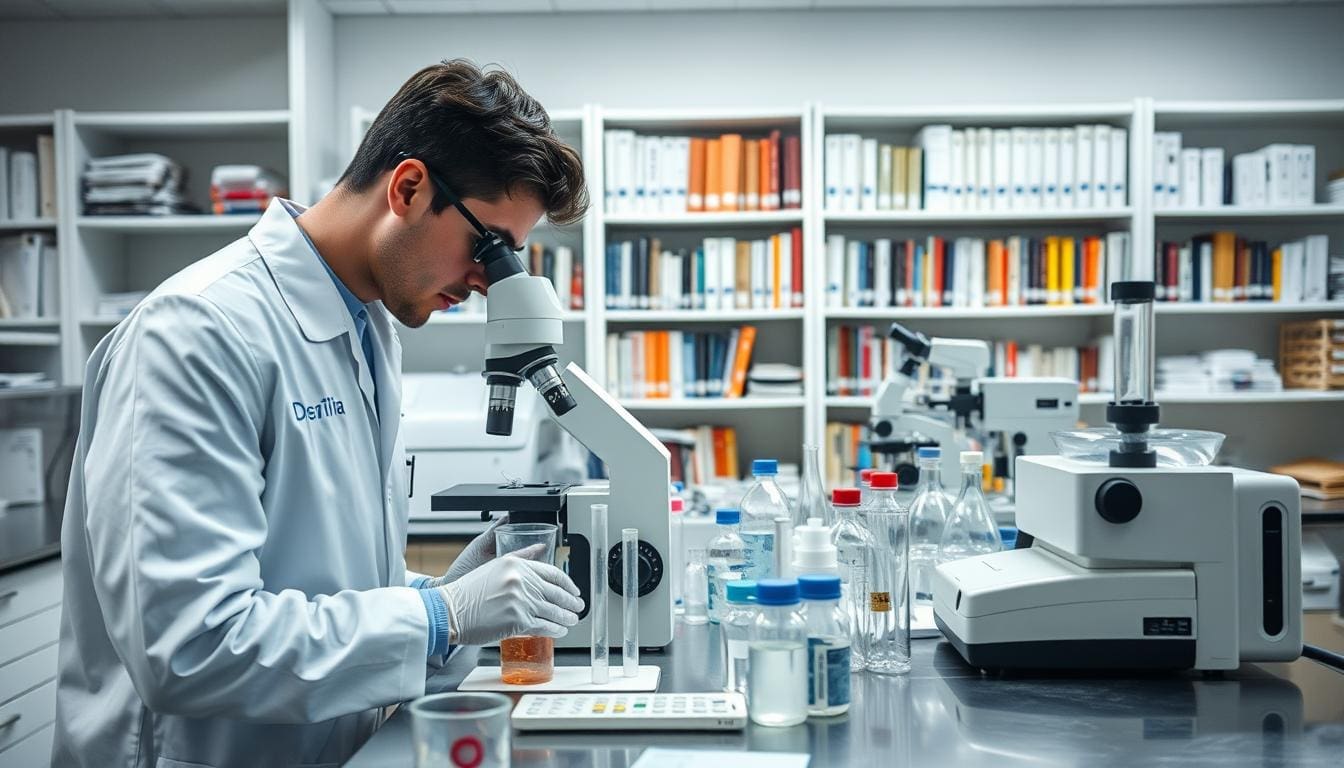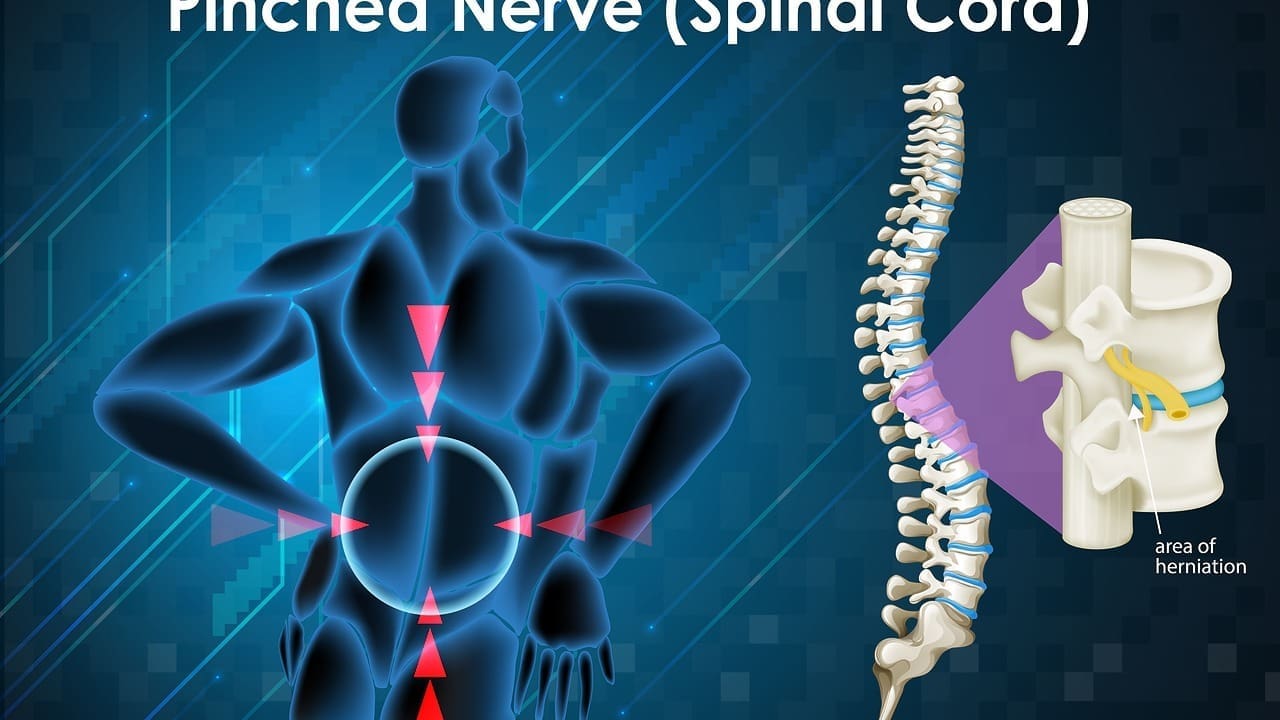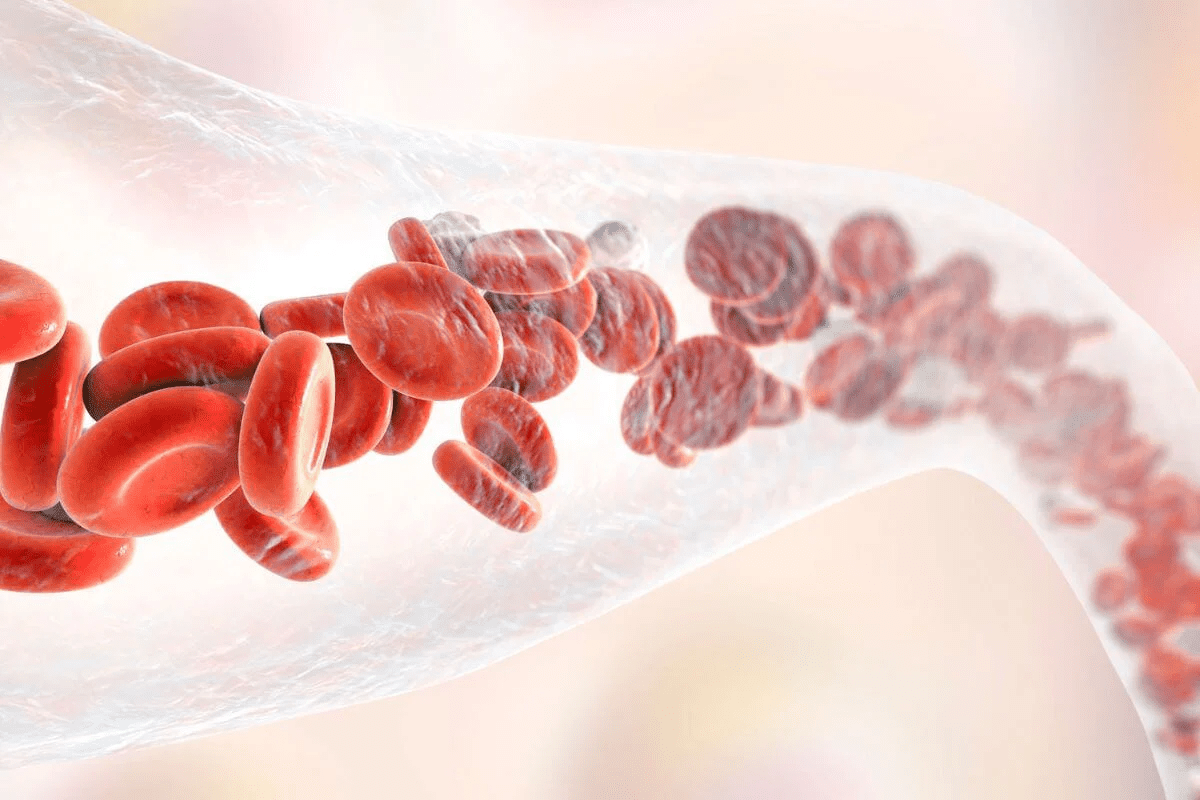Last Updated on November 26, 2025 by Bilal Hasdemir

At Liv Hospital, we know how scary a cancer diagnosis can be. We want you to understand every part of your treatment. Adjuvant therapy is key in fighting cancer, aiming to get rid of any cancer cells left after the main treatment.
We add adjuvant therapy to make the main treatment work better. For those with cancer, this means extra treatments after the main one. It helps get rid of tiny cancer cells, lowering the chance of cancer coming back.
Key Takeaways
- Adjuvant therapy is a treatment given in addition to the primary therapy to maximize its effectiveness.
- It aims to eliminate any remaining cancer cells after primary treatment.
- Adjuvant therapy reduces the risk of cancer recurrence.
- It is a critical part of complete cancer care.
- We offer personalized adjuvant therapy as part of our patient-focused approach at Liv Hospital.
Understanding Adjuvant Therapy in Cancer Treatment
Adjuvant therapy is a key part of cancer treatment. It helps by adding to treatments like surgery, chemotherapy, or radiation. Adjuvant therapy refers to any additional treatment given after the primary therapy to lower the risk of cancer recurrence. It targets any cancer cells left behind by primary treatments.
Definition and Basic Concepts
Doctors choose adjuvant therapies based on the cancer type, stage, and patient’s health. The main goal is to get rid of any cancer cells left after primary treatment. This reduces the chance of cancer coming back.
Adjuvant therapies include chemotherapy, radiation, hormone therapy, immunotherapy, and targeted therapies. Each type works differently to kill cancer cells left behind.
The Role of Adjuvant Therapy in Cancer Care
Adjuvant therapy is essential in cancer care. It helps by adding to primary treatments. Decisions on adjuvant therapy depend on cancer type, stage, and patient’s health.
| Adjuvant Therapy Type | Purpose | Common Cancers Treated |
|---|---|---|
| Chemotherapy | Kill remaining cancer cells | Breast, Colon, Lung Cancer |
| Radiation Therapy | Target localized cancer cells | Breast, Prostate, Head and Neck Cancer |
| Hormone Therapy | Block hormone production | Breast, Prostate Cancer |
Knowing about adjuvant therapy helps patients and doctors make better choices. It has been shown to increase survival rates and lower cancer recurrence risk in many cancers.
The Adjuvant Setting: When Additional Treatment Becomes Necessary
When cancer treatment goes beyond the first surgery, we’re in the adjuvant setting. This phase is key to getting rid of any cancer cells left behind. It’s a critical part of the treatment plan, aiming to lower the chance of cancer coming back.
What Defines the Adjuvant Setting
The adjuvant setting means adding more treatments after the first one, usually surgery. The main goal is to kill any tiny cancer cells that might have been missed. Adjuvant therapies include chemotherapy, radiation, hormone therapy, or immunotherapy, based on the cancer type and stage.
This setting is not just about the treatments used. It’s about the strategy to help the primary treatment work better. It’s all about making sure no cancer cells are left behind, aiming for complete removal.
Timing and Sequence in Cancer Treatment Protocols
The timing and order of adjuvant therapy are very important. They depend on the cancer type, stage, and the patient’s health. Adjuvant therapy usually starts after the patient has fully recovered from their first treatment.
When planning adjuvant therapies, the order matters a lot. For example, chemotherapy or radiation might come after surgery. This is to kill any cancer cells left in the area or elsewhere in the body. The exact order and timing are based on research and the patient’s specific situation.
Understanding the adjuvant setting helps us see how cancer treatment is more than just the first step. It’s about a long-term approach to care, focusing on the best outcomes for the patient.
Primary vs. Adjuvant Treatment: Key Differences
Primary and adjuvant treatments are two ways to fight cancer. Primary treatments aim to remove or destroy the main tumor. Adjuvant therapies target any remaining cancer cells that might not be found.
Goals of Primary Cancer Treatments
Primary treatments focus on the main tumor. Their goals are:
- Removing the tumor surgically
- Destroying cancer cells with radiation or chemotherapy
- Making the tumor smaller
These treatments are the first step in fighting cancer. They are key to better patient outcomes.
How Adjuvant Therapies Complement Primary Interventions
Adjuvant therapies are important next steps. They target cancer cells that might have spread. Their main goals are:
- Getting rid of leftover cancer cells
- Stopping cancer from spreading
- Increasing chances of survival
Combining primary and adjuvant treatments gives a stronger cancer care plan. This helps improve treatment success.
Key differences between primary and adjuvant treatments:
| Characteristics | Primary Treatments | Adjuvant Therapies |
|---|---|---|
| Main Goal | Remove or destroy the main tumor | Eliminate remaining cancer cells |
| Method of Action | Surgery, radiation, chemotherapy | Chemotherapy, radiation, hormone therapy |
Knowing these differences helps patients make better treatment choices. Using both primary and adjuvant therapies leads to a stronger treatment plan.
The Science Behind Adjuvant Therapy
Adjuvant therapy works by attacking microscopic cancer cells. These cells can cause cancer to come back or spread. By getting rid of these cells, adjuvant therapy lowers the chance of cancer returning.
Targeting Microscopic Cancer Cells
Microscopic cancer cells are tiny and hard to find. They stay in the body after the main treatment. Adjuvant therapy is key in finding and killing these cells, stopping cancer from coming back.
- Chemotherapy: Uses drugs to kill cancer cells.
- Radiation Therapy: Employs high-energy rays to destroy cancer cells.
- Hormone Therapy: Blocks or removes hormones that fuel certain cancers.
Preventing Cancer Recurrence and Metastasis
The main goal of adjuvant therapy is to stop cancer recurrence and metastasis. It kills microscopic cancer cells, lowering the risk of cancer coming back. This also stops cancer from spreading to other parts of the body.
- Reducing Recurrence Risk: Adjuvant therapy lowers the chance of cancer coming back.
- Preventing Metastasis: It targets microscopic cells, stopping cancer from spreading to other organs.
- Improving Survival Rates: Good adjuvant therapy helps patients live longer.
It’s important for patients to know how adjuvant therapy works. By fighting microscopic cancer cells and stopping recurrence and metastasis, it greatly helps patients. This therapy is key to better outcomes and a better life for those with cancer.
Types of Adjuvant Therapies for Cancer
Cancer treatment has many options, including adjuvant therapies. These treatments are given after the main treatment to lower cancer coming back.
Adjuvant Chemotherapy
Adjuvant chemotherapy is used after the main treatment to kill any cancer cells left. It’s often for breast, colon, and lung cancers. It aims to stop cancer from coming back by targeting tiny cancer cells.
Radiation Therapy as Adjuvant Treatment
Radiation therapy kills cancer cells with high-energy rays. As an adjuvant, it’s used after surgery to kill any cancer cells left. This helps prevent cancer from coming back in the same area.
Hormone Therapy in the Adjuvant Setting
Hormone therapy treats cancers driven by hormones, like some breast and prostate cancers. In the adjuvant setting, it’s given after main treatment. It blocks the body’s hormones to lower cancer coming back risk.
Immunotherapy as Adjuvant Treatment
Immunotherapy boosts your immune system to fight cancer. As an adjuvant, it helps your body fight any cancer cells left. This can lower the chance of cancer coming back.
For more on cancer treatments, including first-line treatments for oncology, talk to your doctor. They can help choose the best adjuvant therapy for you based on your cancer type.
- Adjuvant chemotherapy targets microscopic cancer cells.
- Radiation therapy kills cancer cells locally.
- Hormone therapy blocks hormone-driven cancer growth.
- Immunotherapy enhances the body’s immune response against cancer.
Determining Who Needs Adjuvant Therapy
To decide if someone needs adjuvant therapy, doctors look at several things. They check risk factors, biomarkers, and genetic tests. This helps them find out who will get the most benefit from extra treatment after the main cancer treatment.
Risk Assessment Factors
Assessing risk is key to figuring out if adjuvant therapy is needed. Doctors consider the cancer’s stage, grade, if lymph nodes are involved, and the patient’s health. This helps them guess if the cancer might come back and if extra treatment is needed.
Key risk factors for needing adjuvant therapy include:
- Tumor size and how aggressive it is
- If lymph nodes are involved
- The cancer’s stage when it was found
- The patient’s age and health
Biomarkers and Genetic Testing
Biomarkers and genetic tests are very important in cancer treatment today. They give doctors info about the tumor’s genes. This info helps them guess how well the cancer will react to treatments, like adjuvant therapy.
Genetic testing finds special changes in the tumor’s DNA. These changes can tell doctors if the cancer is more likely to come back. If so, adjuvant therapy might be a good choice.
Personalized Medicine Approaches
Using risk factors, biomarkers, and genetic tests helps doctors use a personalized medicine approach to cancer treatment. This means treatments are chosen based on each patient’s and cancer’s unique traits. This way, doctors can make treatments better and reduce side effects.
Personalized medicine in adjuvant therapy means:
- Picking the best adjuvant treatment based on the tumor
- Changing treatment intensity based on patient risk
- Watching how the patient responds and adjusting treatment as needed
By taking a personalized approach to adjuvant therapy, we can make care better and improve patient results.
Adjuvant Therapy by Cancer Type
Adjuvant therapy varies greatly among different cancers. It’s tailored to each cancer’s unique traits. Knowing these differences is key to effective treatment.
Breast Cancer Adjuvant Protocols
For breast cancer, treatment choices depend on the cancer’s stage, hormone receptor status, and HER2 status. Chemotherapy, hormone therapy, and targeted therapy are common treatments.
For example, hormone therapy is often given to those with hormone receptor-positive breast cancer. Those with HER2-positive cancer may get targeted therapies like trastuzumab.
Colorectal Cancer Adjuvant Treatments
In colorectal cancer, adjuvant chemotherapy is used to lower recurrence risk, mainly in stage III. Fluoropyrimidine-based regimens, often with oxaliplatin, are typical treatments.
The choice of therapy also considers molecular markers, like microsatellite instability.
Lung Cancer Adjuvant Approaches
For non-small cell lung cancer (NSCLC), adjuvant chemotherapy is recommended for stage II or III after surgery. Platinum-based chemotherapy is the usual treatment.
Decisions on adjuvant therapy in lung cancer also look at the patient’s health and tumor features.
Other Common Cancer Types
Adjuvant therapy is also applied in other cancers, including:
- Prostate cancer: Adjuvant hormone therapy may be used.
- Melanoma: Adjuvant immunotherapy or targeted therapy may be considered for high-risk patients.
| Cancer Type | Common Adjuvant Therapies |
|---|---|
| Breast Cancer | Chemotherapy, Hormone Therapy, Targeted Therapy |
| Colorectal Cancer | Chemotherapy (Fluoropyrimidine-based) |
| Lung Cancer (NSCLC) | Platinum-based Chemotherapy |
Benefits and Effectiveness of Adjuvant Therapy
Research shows that adjuvant therapy can boost survival rates and cut down on cancer coming back in patients. It targets tiny cancer cells left after the main treatment. This helps stop cancer from coming back and spreading.
Survival Rate Improvements
Adjuvant therapy has been proven to greatly increase survival chances in many cancers. For example, new findings in breast and lung show its key role in better patient results.
Using adjuvant therapy can significantly lower death rates in cancer patients. This is clear in cancers where treatments like chemotherapy, radiation, or hormone therapy are used.
| Cancer Type | Adjuvant Therapy Type | Survival Rate Improvement |
|---|---|---|
| Breast Cancer | Chemotherapy, Hormone Therapy | 20-30% |
| Lung Cancer | Chemotherapy, Radiation Therapy | 15-25% |
| Colorectal Cancer | Chemotherapy | 10-20% |
Recurrence Risk Reduction
Adjuvant therapy’s main goal is to lower cancer coming back risk. By getting rid of tiny cancer cells, it greatly reduces the chance of cancer coming back.
Good adjuvant therapy not only boosts survival but also improves life quality. It reduces the need for more treatments and lowers cancer-related problems.
Quality of Life Considerations
Adjuvant therapy’s main aim is to improve survival and lower recurrence risk. But, its effect on life quality is also key. We aim to find the right balance between therapy benefits and side effects for full care.
Supportive care is vital during adjuvant therapy to manage side effects and keep life quality up. This includes nutrition support, counseling, and symptom control.
Side Effects and Management Strategies
Adjuvant therapy can be tough due to side effects. It needs good supportive care. Knowing the side effects and how to handle them is key for patients and doctors.
Common Side Effects of Adjuvant Treatments
Therapies like chemotherapy, radiation, and hormone therapy can cause side effects. These include fatigue, nausea, hair loss, and a higher risk of infections. The side effects can differ for each patient, based on the treatment and their health.
Common Side Effects:
- Fatigue and weakness
- Nausea and vomiting
- Hair loss
- Increased risk of infections
- Neuropathy
Supportive Care During Adjuvant Therapy
Supportive care is vital for managing side effects and improving life quality. It includes nutrition advice, psychological support, and ways to manage symptoms.
| Supportive Care Measure | Description | Benefits |
|---|---|---|
| Nutritional Counseling | Personalized dietary advice to manage treatment-related side effects. | Helps maintain strength, manage weight, and reduce treatment complications. |
| Psychological Support | Counseling and therapy to address emotional and psychological challenges. | Reduces anxiety and depression, improving overall well-being. |
| Symptom Management | Strategies and medications to alleviate symptoms such as pain, nausea, and fatigue. | Enhances patient comfort and ability to continue treatment as planned. |
Long-term Effects and Monitoring
Adjuvant therapy can have long-term effects. These may not show up until months or years later. They can include heart problems, secondary cancers, and fertility issues. It’s important to monitor these effects closely.
Long-term Effects to Monitor:
- Cardiac dysfunction
- Secondary malignancies
- Fertility concerns
- Cognitive changes
Understanding and managing adjuvant therapy side effects is key. Patients should work closely with their healthcare team. This ensures the best treatment outcomes.
Discussing Adjuvant Treatment Options With Your Healthcare Team
It’s important for patients to know about adjuvant treatment options. This knowledge helps them make informed decisions with their healthcare team. Good communication is key to understanding cancer treatment.
Questions to Ask Your Oncologist
When talking to your oncologist about adjuvant treatment, ask the right questions. This helps you understand your treatment plan better. Here are some questions to consider:
- What are the benefits and risks of the recommended adjuvant therapy?
- How will this treatment affect my quality of life?
- Are there other adjuvant treatment options available?
- How will we check if the treatment is working?
- What long-term side effects might I experience?
These questions help you understand your options and make informed decisions.
Shared Decision-Making in Adjuvant Therapy
Shared decision-making is a team effort between patients and healthcare providers. It considers the latest evidence, patient preferences, and clinical expertise. In adjuvant therapy, it’s key because it lets patients have a big role in their treatment.
Benefits of shared decision-making include:
- Patients are happier with their treatment plans
- Treatment matches patient values and preferences better
- Patients understand their options better
Getting a Second Opinion
Getting a second opinion is common and valuable in cancer care. It can give patients more information and reassurance about their treatment, including adjuvant therapy.
When considering a second opinion, patients should:
- Talk about it with their current healthcare team
- Find specialists for a second opinion
- Bring all medical records to the second opinion
By actively discussing adjuvant treatment options, patients can make better decisions. This can lead to better treatment outcomes.
Conclusion: The Future of Adjuvant Therapy in Cancer Care
Adjuvant therapy is key in cancer care. New research and advancements are making these treatments better. This means we can expect better results in fighting cancer.
New treatments and personalized care are leading the way. We’re moving towards therapies that target cancer cells more effectively. This reduces harm to healthy tissues.
We’re looking forward to even better adjuvant therapy in the future. This will lead to better outcomes and a better quality of life for patients. By keeping up with these advancements, we can give patients the best care possible.
FAQ
What is adjuvant therapy, and how does it work in cancer treatment?
Adjuvant therapy is extra treatment given after the main therapy to make it work better. For cancer patients, it means getting extra treatments after surgery. This helps kill any tiny cancer cells left behind, lowering the chance of cancer coming back.
What is the adjuvant setting in cancer treatment, and why is it important?
The adjuvant setting is a key part of cancer treatment. It’s when extra therapies are given after the main treatment. It’s important because it helps get rid of any cancer cells left, which lowers the chance of cancer coming back and improves patient results.
How do primary and adjuvant treatments differ in cancer care?
Primary treatments aim to remove or destroy the main tumor. Adjuvant therapies are extra treatments given to kill any cancer cells left. Knowing the difference between these treatments is key for good cancer care.
What are the different types of adjuvant therapies available for cancer treatment?
There are many adjuvant therapies, like chemotherapy, radiation therapy, hormone therapy, and immunotherapy. Each has its own use and benefits. They help tailor treatment to fit each patient’s needs.
How is it determined which patients need adjuvant therapy?
Deciding who needs adjuvant therapy involves looking at many factors. These include risk assessment, biomarkers, and genetic testing. These help make treatment plans that fit each patient’s needs.
What are the benefits of adjuvant therapy in cancer treatment?
Adjuvant therapy has many benefits. It can improve survival rates, lower the risk of cancer coming back, and help with quality of life. It’s important for better patient care and overall well-being.
What are the common side effects of adjuvant treatments, and how are they managed?
Adjuvant therapies can have side effects that affect quality of life. The type of therapy determines the side effects. There are ways to manage these effects, and watching for long-term effects is also important.
How can patients discuss adjuvant treatment options with their healthcare team effectively?
Patients can talk about adjuvant treatment options by asking questions and making decisions together. Getting a second opinion can also help. This lets patients be more involved in their care.
Are there any advancements or innovations in adjuvant therapy that may improve patient outcomes?
Adjuvant therapy is always getting better, thanks to new research and technologies. New therapies and tools are being developed to make treatment more effective and improve patient results.
How does adjuvant therapy apply to different types of cancer, such as breast, colorectal, and lung cancer?
Adjuvant therapy plans vary for different cancers. This shows how different each cancer type is. Knowing the specific treatments for each cancer is key for effective treatment and better patient outcomes.
References
JAMA Network – JAMA Oncology (article on adjuvant therapy)
https://jamanetwork.com/journals/jamaoncology/fullarticle/2383147
Wikipedia – Adjuvant therapy
https://en.wikipedia.org/wiki/Adjuvant_therapy
OncoLink – Adjuvant Therapy (overview)
https://www.oncolink.org/cancer-treatment/cancer-medications/overview/adjuvant-therapy








